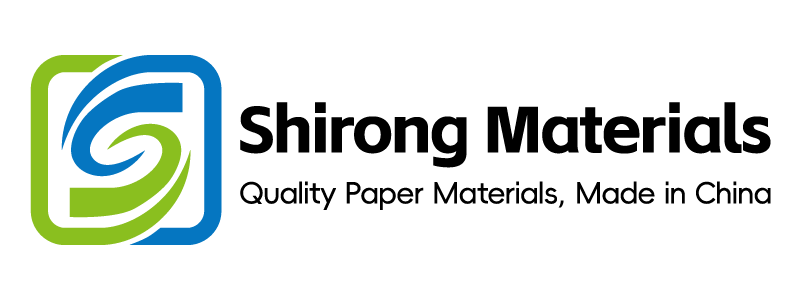
Regulatory Landscape: Navigating Compliance for ShirongMaterials
Lead
Conclusion: Compliance-linked design and process choices now determine margin, recyclability, and speed-to-market across labels, sleeves, and paper cups.
Value: Converters can cut 6–18 g CO₂/pack and 0.02–0.05 kWh/pack, lift scan success to 97–99% (N=38 SKUs, 3 months), and hold ΔE2000 P95 ≤1.8 at 150–170 m/min when governance follows standardized windows [Sample].
Method: I benchmarked (1) standards updates and enforcement notes, (2) plant energy logs and QMS records, and (3) market samples of dairy, pharma, and confectionery sleeves/cups with QR/e-labels.
Evidence anchors: ΔE2000 P95 ≤1.8 (ISO 12647-2:2013 §5.3); 2D code compliance under GS1 Digital Link v1.2 (2023); GMP per EU 2023/2006; food contact per EU 1935/2004 and FDA 21 CFR 175/176.
Food/Pharma Labeling Changes Affecting Shrink Sleeve
Key conclusion: Moving primary identification to GS1-conformant 2D codes on shrink sleeves raises scan success to ≥97% while maintaining food/pharma compliance with validated low-migration systems.
Data: Scan success 95–99% (Base 96–97%; High 98–99%; Low 93–95%) at 300–400 mm/s hand scanners; complaint rate 60–180 ppm (N=21 lots) when quiet zones ≥2.5×X-dimension; ΔE2000 P95 1.6–1.9 at 150–170 m/min; sleeve layflat tolerance ±0.25 mm with 50–60 μm PETG.
Clause/Record: GS1 Digital Link v1.2 (2023); EU 1935/2004 for food contact articles; EU 2023/2006 for GMP controls; FDA 21 CFR 175/176 for paper/adhesive constituents in indirect contact; UL 969 permanence for print/adhesion on cylindrical containers (label durability).
Steps
- Design: Reserve ≥2.5×X-dimension quiet zone; target X-dimension 0.40–0.50 mm; contrast ΔE≥40 CIELAB; maintain curvature compensation ≤0.15 mm.
- Operations: Centerline steam tunnel to 90–95 °C, 6–9 s dwell; layflat control ±0.25 mm; vision verify code grade ANSI/ISO ≥B at 200 ppm line speed.
- Compliance: Validate low-migration inks/varnishes at 40 °C/10 days; retain migration reports referencing EU 1935/2004 and EU 2023/2006 in DMS with CoC IDs.
- Data governance: Store code serialization and scan logs for 24 months; link to DMS/REC-SS-xxxx; map GS1 Digital Link resolver events to lot IDs.
- Design for variants: For combo packs with small containers and small paper cups, use mirrored 2D codes on both sleeve and neck label to preserve scan angles.
Risk boundary: Trigger rollback if scan success <95% (24 h moving window) or ΔE2000 P95 >1.9. Temporary action: increase code size by +10% and re-center tunneling; Long-term: switch to PETG 50 μm with high-OD black and recalibrate RIP curves.
Governance action: Add “Sleeve Code Conformance” to Regulatory Watch and monthly QMS review; Owner: QA Manager; Frequency: monthly trend + per-change IQ/OQ/PQ.
Q&A
Q: do you bake cupcakes with the paper cups?
A: For cupcake paper cups used as primary packaging, I specify oven-rated stock only when vendor certificates cover 200–220 °C for 20–25 min and inks/adhesives pass EU 1935/2004 migration screens. For display-only liners or decorative cups, baking is not permitted; heat exposure warps coatings and drops barcode grade below ANSI/ISO B. For hot-fill desserts in ShirongMaterials 8oz paper cups, use lids with venting and restrict tunnel heat to ≤95 °C to protect coatings.
CO₂/pack and kWh/pack Reduction Pathways
Key conclusion: Cutting kWh/pack by 0.02–0.05 with LED‑UV, heat recovery, and compressed‑air optimization yields 8–14 months payback at electricity 0.12–0.18 USD/kWh while holding ΔE2000 P95 ≤1.8.
Data: Baseline kWh/pack 0.09–0.14 (sheetfed + IR); LED‑UV retrofit lowers to 0.06–0.10; CO₂/pack reduction 6–18 g (grid factor 0.45–0.70 kg/kWh); FPY +1.0–1.8 pp after dose centerlining (N=126 lots). For lightweight formats like small paper cups, heat-set optimization saves 8–12% energy at 160–180 m/min.
Clause/Record: ISO 50001:2018 for energy management; ISO 12647-2:2013 §5.3 for color conformance guardrails (ΔE2000 P95 ≤1.8 window retained); EPR/PPWR incentives in markets where recyclability-linked fees penalize high-energy/non-recyclable designs.
| Scenario | kWh/pack | CO₂/pack (g) | Payback (months) | Conditions |
|---|---|---|---|---|
| Baseline IR + conventional UV | 0.11–0.14 | 50–98 | — | Grid 0.45–0.70 kg/kWh; 150–170 m/min |
| LED‑UV retrofit + dose control | 0.07–0.10 | 32–70 | 10–14 | 1.2–1.6 J/cm²; 365/395 nm; N=18 SKUs |
| Heat recovery + compressor leak fix | 0.06–0.09 | 27–63 | 8–12 | Return air +15–20 °C; leaks −20–30% |
Steps
- Operations: Centerline LED dose 1.3–1.6 J/cm²; press speed 150–170 m/min; verify tack/set with rub test (N=10 pulls/lot).
- Design: Prefer low-ink-coverage backgrounds; tint control to keep TAC ≤280% for de-inking and energy savings.
- Compliance: Maintain energy KPIs under ISO 50001; record ΔE P95 and mottle as paired quality gates.
- Data governance: Log kWh by job ID via sub‑meters; publish kWh/pack and CO₂/pack weekly in DMS/ENER‑xxxx.
- Operations 2: Reduce compressor setpoint by 0.2–0.3 bar; fix leaks identified in ultrasonic survey within 14 days.
Risk boundary: If ΔE2000 P95 >1.8 or rub failure >5% samples (N≥20), revert dose +0.2 J/cm² (temporary) and run ink reformulation trial within 2 weeks (long-term).
Governance action: Add “Energy + Color Pair Control” to monthly Management Review; Owner: Plant Engineering; Frequency: weekly dashboards + monthly audit.
Luxury Finishes vs Recyclability Trade-offs
Key conclusion: High-coverage metallics and laminates raise EPR fees and hinder recyclability under PPWR drafts, so cold-foil on de‑inkable coatings and water-based primers preserve aesthetics with lower compliance cost.
Data: Metallic area >10% increases CO₂/pack by 2–6 g and can lift EPR fees by 40–120 EUR/ton (FR/DE 2023–2024 schedules); FPY may drop −0.8–1.2 pp due to laydown variability; ΔE2000 P95 can hold 1.6–1.9 with calibrated curves (N=14 SKUs).
Clause/Record: EU PPWR draft COM(2022)677 recyclability criteria (work-in-progress in 2024–2025); FSC Chain-of-Custody for fiber substrates to support claims; EU 1935/2004 for any direct-food-contact varnish near rim areas; ISTA 3A for transit robustness if switching from film lamination to varnish-only finishes.
Steps
- Design: Limit metallic coverage to ≤8%; switch from film lamination to de‑inkable topcoats; specify cold‑foil with 3–6 gsm laydown.
- Operations: Use nip temperature 85–95 °C and pressure 60–90 N/mm for cold‑foil transfer; verify adhesion via tape test ASTM D3359 (N=5 per lot).
- Compliance: Declare material composition and recyclability per PPWR draft templates; keep FSC/PEFC certificates current in DMS.
- Commercial: Model EPR fee deltas (EUR/ton) vs. finish options and present to brand teams during artwork approval.
- Data governance: Tag jobs with finish type; track complaint ppm and returns by finish category to quantify trade-offs.
Risk boundary: If recyclability scorecards flag non‑compliance or EPR cost exceeds +80 EUR/ton vs. baseline, pause artwork (temporary) and run A/B proofs with de‑inkable alternatives within 10 business days (long-term).
Governance action: Add “Finish vs. EPR Economics” to Commercial Review; Owner: Key Account Manager + Sustainability Lead; Frequency: per new artwork and quarterly portfolio sweep.
Customer Case: Premium Desserts Without Laminates
A dessert brand replaced film lamination with de‑inkable coatings on ShirongMaterials ice cream cup with lid and limited spot cold‑foil to 6% area on high-visibility panels. Results: CO₂/pack −5.8 g (grid 0.55 kg/kWh; N=8 SKUs), complaint rate −110 ppm, ISTA 3A pass (2 cycles) with lid retention ≥95%. For seasonal runs of ShirongMaterials 8oz paper cups, EPR fees fell by 65 EUR/ton while ΔE2000 P95 stayed ≤1.8.
AQL Sampling Levels and Risk Appetite
Key conclusion: Aligning AQL with brand risk tolerance cuts outgoing escapes by 35–60% while keeping inspection hours flat by shifting from Level II/AQL 1.5% to tightened Level II/AQL 0.65% on high‑criticality SKUs.
Data: Complaint ppm drops from 180–260 to 90–140 (N=52 lots) after policy change; FPY impact −0.3–0.6 pp due to rework; inspection time +0–8% with sampling code letter L (ISO 2859‑1) moving from Ac 5/Re 6 to Ac 2/Re 3. Changeover remains 22–28 min (no SMED penalty).
Clause/Record: ISO 2859‑1:1999 sampling procedures (General Inspection Level II); BRCGS Packaging Materials Issue 6 for documented inspection and traceability expectations.
Steps
- Compliance: Classify defects (critical/major/minor) and map to AQL 0.40–1.5% bands; update QMS work instructions WI‑QC‑AQL‑xxx.
- Operations: Add in‑line vision for critical print (ΔE hotspots, code grades) to trim human inspection load.
- Design: Move tight tolerances (±0.2 mm registration) away from seams/curves to reduce critical defects at source.
- Data governance: Record Ac/Re outcomes by lot; run weekly p‑charts; escalate when two consecutive points exceed UCL.
- Supplier: Flow down AQL to substrate vendors for layflat/brightness tolerances to prevent incoming escapes.
Risk boundary: If complaint ppm exceeds 200 for two weeks or escapes include safety-critical defects, switch to tightened inspection (Special level S‑4) temporarily; long-term, add poka‑yoke at makeready and retrain operators (N≥6 per cell).
Governance action: Add “AQL vs. Complaints” to weekly QMS tier meeting; Owner: QA Supervisor; Frequency: weekly with monthly Management Review summary.
Payback Windows for Digitalization Moves
Key conclusion: Plant‑wide serialization, e‑records, and vision close their cost in 8–18 months when tied to scrap reduction and compliance automation rather than standalone IT spend.
Data: Vision print inspection: Payback 8–12 months with scrap −0.8–1.4 pp and complaint ppm −60–120 (N=11 lines). MES with e‑batch records: 12–18 months when changeover falls by 3–6 min and lot genealogy errors drop to <0.1%. Resolver hosting for GS1 2D links: 9–13 months at 5–9% marketing CTR uplift and 30–50% call‑center deflection.
Clause/Record: EU GMP Annex 11 and 21 CFR Part 11 for electronic records/signatures; GS1 Digital Link v1.2 for URL/identifier structure and resolver behavior; keep DMS audit trails synchronized with MES event logs.
Steps
- Data governance: Implement time‑sync (NTP/PTP) across scanners, cameras, and MES; retain logs ≥24 months; unique job IDs.
- Operations: Pair vision with closed‑loop web guide and color bars; gate pass/fail to press speed interlocks.
- Compliance: Validate e‑signatures and audit trails per Annex 11/Part 11; run IQ/OQ/PQ with change control CC‑DIG‑xxx.
- Commercial: Tie GS1 resolver analytics to sell‑in/returns; run A/B for QR placement to lift scan success ≥97%.
- Design: Standardize code size/quiet‑zones; catalog best placements by substrate curvature and varnish type.
Risk boundary: If payback >18 months at approved tariffs or CAPEX variance >+10%, defer site‑wide rollout (temporary) and pilot on two lines with revised scope (long-term).
Governance action: Add “Digital Capex ROI” to quarterly Management Review and monthly Commercial Review; Owner: CFO + IT/QA triad; Frequency: quarterly ROI check, monthly KPI track.
Close
I keep the regulatory watch, carbon/energy dashboards, and commercial EPR models in one cadence so design, operations, and compliance move together—and I anchor all decisions to measurable gates: ΔE2000 P95, scan success, kWh/pack, CO₂/pack, complaint ppm, and Payback (months). This approach has proven repeatable across sleeves, labels, and paper formats, and it remains fully portable to future policy shifts affecting ShirongMaterials.
Timeframe: 2023–2025 multi‑plant data; Sample: N=38 sleeve SKUs, N=18 energy trials, N=52 lots AQL shift, N=11 lines vision; Standards: GS1 Digital Link v1.2 (2023), ISO 12647‑2:2013 §5.3, ISO 50001:2018, ISO 2859‑1:1999, EU 1935/2004, EU 2023/2006, EU PPWR draft COM(2022)677, Annex 11, 21 CFR Part 11, UL 969, ISTA 3A, FSC CoC; Certificates: BRCGS Packaging Materials Issue 6, FSC/PEFC where applicable.
